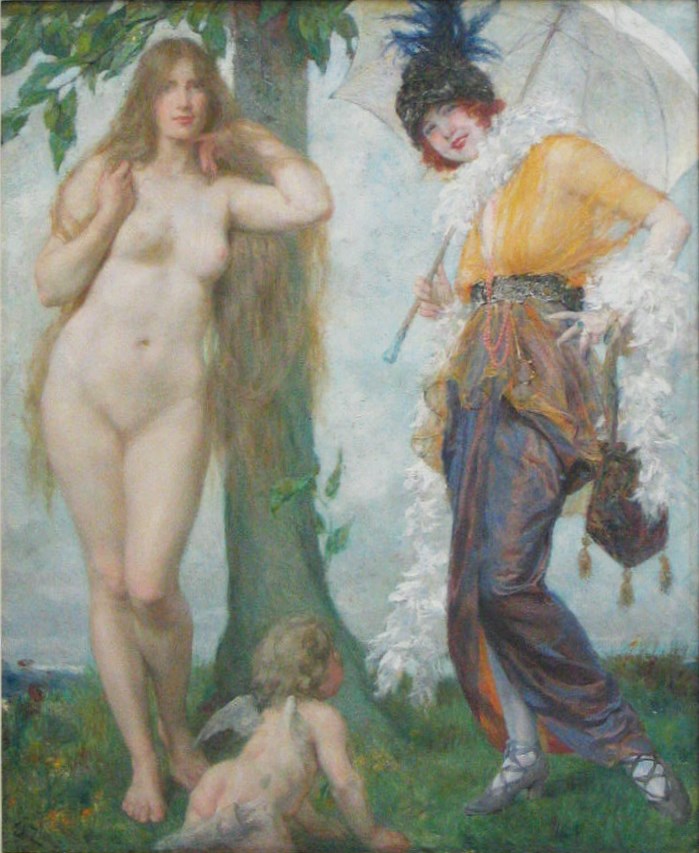Description:
Edouard Zier (1856-1924) was a French painter and illustrator (“Le Mondé Illustre”, “L’Illustration”), a member of the Société des Artistes Français. He received his first drawing lessons from his father, a Pole – Wiktor Kazimierz Zier, who was involved in religious painting, then from Jean-Léon Gérôme. He debuted at the Salon at the age of only 18. He started with painting biblical and historical scenes, later his works were dominated by allegorical and symbolic themes.
Description of the painting:
“Eve” is a work that juxtaposes two women with the same name, in poses that emphasize their physical assets. We recognize in them Eve from the Bible and contemporary Eve seducing with her costume and make-up. This evokes involuntary associations regarding their common past. They refer to the breaking of the Divine commandments, the role assigned to them, and the self-awareness of their effectiveness in influencing the opposite sex. Femininity and its sensuality in Zier’s allegorical representation are associated with sin, and in Bible terms, the greatest and most tragic in its consequences.
The painting entitled “Eve” depicts two women. Characteristic is the two-part composition that separates the space belonging to the biblical Eve and that completely subordinated to the figure of the modern woman – today’s Eve. The etymology of the name itself is essential for understanding the symbolism of the work. According to the biblical record, Eve – Havvah was ‘the one who gave life’. On the other hand, its equivalents, Aramaic ‘chewja’ and Arabic ‘hayya’ mean ‘snake’. Hence, Eve is often referred to as “the snake of her husband”**.
On the left side of the pictorial field devoted to the biblical sphere we see the naked figure of Eve leaning against the trunk of the Paradise Tree of the Knowledge of Good and Evil. However, there are no fruits on the tree. There is also no image of the serpent-tempter. In this context, Eve herself becomes a seductive serpent – not only through the meaning of her name, but also through the characteristic gesture of her right hand holding a strand of long, twisting light hair, seductively revealing her naked breasts. The woman created as a complement to the first man is deprived of his presence. She becomes an individual, independent, aware of her charms being.
On the right side of the representation, the artist placed a ‘femme fatale’, that is, a modern woman. Dressed in a costume from the beginning of the 20th century. Her face adorned with makeup is surrounded by tufts of blood-red hair. A long skirt with a slit, a transparent fabric tied like a blouse, a boa scarf with white feathers, a hat with an egret, an umbrella, a bag and high-heeled shoes – these are all attributes of a fashionable woman. It is to her that the cupid sitting at the foot of the tree is directing his gaze with the quiver of love arrows. Today’s Eve seduces with her charms and vanity just as effectively.


